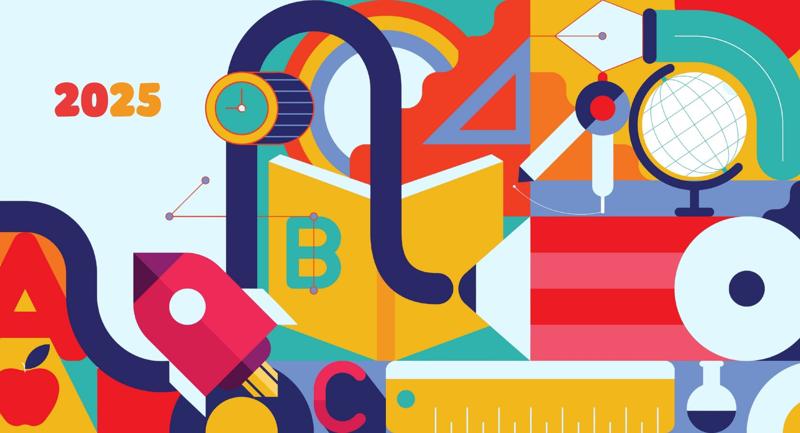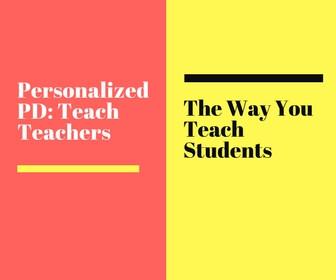As an instructional coach for 15 years, I know teachers are invested in their own professional growth, as well as the growth and achievement of their students. Usually, teachers are receptive to coaching guidance. However, these same educators, despite their best intentions, often forget to pivot away from old teaching habits unless specifically redirected, especially once the instructional coach moves on to another school. As education expert and author Robyn Jackson has said, “If your support for teachers doesn’t set them up to be successful without you, it’s not support, it’s a crutch.”
Indeed, how can schools be assured that the dollars they are investing in coaching will lead to sustained impact after the coach leaves?
Research suggests that it is easier to replace a bad habit with a good one rather than just stopping the bad habit alone. Instructional coaching can replace less effective teaching practices with more efficacious ones. However, before something becomes a habit—good, bad, or otherwise—it needs to become a routine. Therefore, if schools want to ensure that coaching moves will be consistently implemented after coaching ends, then administration must ensure that the instructional moves suggested during coaching become part of the school’s routine.
The key to sustained impact from any instructional coaching resides in the school administration’s commitment to systematizing practices and procedures that will allow coaching moves to become norms embedded within the school culture. Here are some strategies to try.
Sustaining Post-Coaching Impact
1. Formalize teacher team processes.
Schools can consider embedding professional learning community (PLC) time during the school day at least once a week. During this time, teachers can keep talking about new instructional strategies they've learned, practicing them, and going over student work together using team discussion protocols. These protocols help ensure that everyone's voice is heard and assist teacher teams in achieving teaching and learning goals efficiently. The National School Reform Faculty has many discussion protocols available online.
Administrators should regularly join these meetings, not as leaders but as collaborative partners and team members. When administrators participate as team members rather than moderators, it empowers teachers to take ownership of implementing coaching strategies and to feel invested in the results. Moreover, the administrator's presence underscores the significance of implementation efforts.
Administration must ensure that the instructional moves suggested during coaching become part of the school’s routine.
Teacher teams should also adopt a standard meeting agenda format to ensure that meetings stay focused on the goal of implementing instructional moves learned during coaching or on instructional deliverables in general. This agenda could include a quick round of introductions of those present, a brief chat on individual successes since the last meeting, discussion of old business, discussion of new instructional practices, and determination of next steps. Creating a meeting agenda, having team members take on roles like facilitator, note-taker, or timekeeper, and establishing success criteria all contribute to holding everyone accountable for coaching outcomes that drive student growth and achievement.
2. Highlight specific coaching moves made during observations and walkthroughs.
Teacher teams and PLCs should inform school leaders about the particular instructional coaching strategies they're working on before leaders conduct informal or formal observations or walkthroughs. Additionally, school leaders can guide educators in collectively deciding which coaching strategies should be applied across grade levels and subjects and which ones are suitable for specific instructional areas.
Once it is determined which coaching moves should be scaled out, administrators might select teachers to accompany them on classroom walkthroughs, aimed at observing specific coaching practices that either require further development or highlight observed teacher strengths. This turns walkthroughs into opportunities for educator lesson study and feedback.
Administrators also might schedule ongoing and more formal walkthroughs to benchmark teacher progress in applying specific instructional practices developed during coaching, ensuring that instructional practices are not only occurring consistently throughout the year but also that teachers are improving in their use of such practices. Leaders and PLC facilitators can then share walkthrough data with others to define the next steps, instructionally, as a faculty.
During more formal teacher evaluation processes, school leaders might ask teachers to reflect during pre- or post-conferences on how newly introduced instructional moves can help them better reach their student success goals. Administrators could then provide teachers with additional resources and maintain a professional library focused on powerful instructional strategies outlined by the instructional coach. Additionally, the school can use technology, such as an online teacher training platform and virtual webinars, to further support teachers in implementing these strategies.
3. Empower coachees to mentor others.
In a recent meeting, I told my coachees and their school principal that my goal, as an education consultant, is to work my way out of a job—to empower those I support to lead others. The principal, teachers, and I are now developing a schedule for when the teachers I coached might be ready to open their classrooms up as models of best practice. Through participation in collaborative PLCs or as instructional leads facilitating training themselves, teachers who have been coached can develop a shared understanding across the school of the instructional strategies to be implemented.
4. Use data to determine the effectiveness of coaching and next steps.
In addition to their own growth, most educators I know went into this profession to make a positive impact on student growth and achievement. Therefore, administrators can encourage teachers to adopt lasting changes in their methods by sharing any positive effects on student academic performance resulting from coaching-inspired instructional adjustments. For example, if schools conduct regular diagnostic assessments like iReady or NWEA MAP Growth, they can track changes in student achievement between different test periods. Moreover, within PLCs, educators can assess the quality and rigor of student work before and after coaching sessions. It's important to remember that student work itself serves as valuable data.
My goal, as an education consultant, is to work my way out of a job—to empower those I support to lead others.
There are other ways to gather data on instruction and teacher practices. For instance, as an instructional coach, I often focus on enhancing student ownership in teaching methods. To align my coaching with the school's teaching approach, I ask administrators to observe classroom activities related to student ownership during walkthroughs. This keeps teachers aware of expectations. Administrators can use tools like Google Surveys to track student-driven activities monthly and share findings in faculty meetings. Together, staff can plan next steps based on this data. School leaders can also discuss findings in informal talks with teachers. As one principal noted, "What's not inspected isn't respected."
Administrators can proceed by collaborating with staff to establish a school-wide professional development strategy that formalizes coaching-derived instructional techniques. This plan should outline one to three main instructional objectives for the school, accompanied by one to three coaching strategies for each goal. It should also specify data-driven milestones and clarify responsibilities for both teachers and administrators. This approach fosters community accountability for enhancing teaching and learning. Progress on the professional development plan can be reviewed at regular school instructional or leadership team meetings.
5. Involve students.
I often encourage teachers to seek feedback from students regarding the adjustments I propose. For instance, when focusing on increasing student-to-student engagement strategies, students can provide insights into their collaboration experiences and suggest improvements. Teachers are motivated by their students' self-reflection and often integrate student reflection into their teaching practice. Some have even developed performance-based rubrics for collaboration with input from students. These rubrics typically include criteria such as task focus, responsibility-sharing, active listening, effective discussion, and overall collaboration level.
Administrators and teachers can involve students in improving instruction by inviting them to share their thoughts on how new teaching methods are affecting their learning. For example, a teacher I'm coaching asked her students for feedback on an inside-outside circle discussion activity used for multiplying mixed fractions instead of having her students complete worksheets individually. The students appreciated the collaboration but recognized the need to improve their communication as a class. Encouraged by their reflections, the teacher is excited to try this activity again.
Longevity will require a systemic integration of best instructional practices into the fabric of daily routines and professional development.
Connecting Coaching to Lifelong Growth
It is crucial to recognize that sustained impact from instructional coaching requires more than just temporary shifts in practice. Longevity will require a systemic integration of best instructional practices into the fabric of daily routines and professional development. This is worth the effort. A school’s commitment to coaching demonstrates to our students that the goals of fostering continual growth, lifelong learning, and learner autonomy are not just aspirations we have for our students but for each person vested within a school community.








